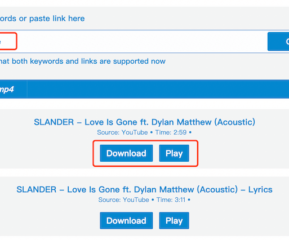When developing a fresh content marketing strategy, it is essential to acknowledge the significant amount of work involved. With various tasks requiring your attention, it can be surprisingly easy to overlook the importance of defining specific content requirements. In fact, many companies make the mistake of allowing their employees to create articles or blog posts without clear guidelines. While this approach may not be entirely flawed, it does not contribute to a focused content strategy.
Your content must achieve a harmonious blend of being informative and entertaining while aligning with your company objectives. After all, the main objective of composing blog posts is to offer extensive knowledge on a particular topic. There are countless blogs available online that provide information on various subjects. The factor that sets these blogs apart is the level of engagement in their posts. If you aim to draw in a larger audience to your blog, your posts must be highly entertaining as well as informative. But, creating such types of blog posts requires more than just putting words on paper.
Your content must achieve a harmonious blend of being informative and entertaining while aligning with your company objectives. After all, the main objective of composing blog posts is to offer extensive knowledge on a particular topic. There are countless blogs available online that provide information on various subjects.
The factor that sets these blogs apart is the level of engagement in their posts. If you aim to draw in a larger audience to your blog, your posts must be highly entertaining as well as informative. But, creating such types of blog posts requires more than just putting words on paper. There are specific steps that need to be followed to achieve this goal. With that in mind, some of these steps are mentioned below:
Table of Contents
Hire Blog Writers or Professional Blog Writing Services
If you think you don’t have what it takes to create an entertaining and informative blog, you should stop what you’re doing and hire blog writers or professional blog writing services. That said, hiring professional blog writing services can bring numerous benefits.
Firstly, professional writers have the expertise and experience to create high-quality content that is engaging, informative, and well-researched. This can help attract more readers to your blog and keep them coming back for more. Secondly, professional blog writers understand the importance of search engine optimization (SEO) and can incorporate relevant keywords and phrases into their blog posts to boost visibility in search engine results. This can significantly improve your blog’s ranking and increase organic traffic.
Additionally, hiring professionals allows you to focus on other aspects of your business while they take care of creating compelling content for your blog. They can also ensure that your content is free from grammatical errors, spelling mistakes, and plagiarism. Furthermore, professional blog writing services often hire writers specializing in different niches or industries, allowing them to deliver content tailored to your target audience.
Lastly, outsourcing blog writing can be cost-effective as you only pay for the content you need without hiring full-time writers or investing in their training and resources.
Learn More about Your Business Considerations
To determine the content mix for your business, take into account various factors:
Expertise in Your Industry
When it comes to creating content for your company, it’s important to stay within your area of expertise. While it may be tempting to branch out and write about unrelated topics, it’s crucial to remember that your audience is looking to you for knowledge and insights in your specific industry.
By staying focused on what your company does best, you can establish yourself as a trusted authority in your field. This means avoiding the temptation to write about unrelated subjects just to fill up space.
Instead, take the time to research and produce valuable content that showcases your expertise and provides value to your target audience. By doing so, you’ll not only position yourself as an industry leader but also attract potential customers who are seeking the expertise you can provide. So stick with what you know best and let your content shine in relevance and professionalism.
Brand Focus
When considering how your company has built its reputation, it’s essential to think about the message you want to convey. Whether your brand focuses on guidance, entertainment, inspiration, or surprise, each piece of content you create should align with your brand identity. It’s important to establish whether your brand is known for being fun, serious, traditional, innovative, or a combination of the three.
This way, you can ensure that all your content reinforces your brand’s core values and personality. Consistency is key in building a strong brand presence, so ensure all aspects of your messaging are aligned. Doing so will strengthen your brand reputation and attract and retain customers who resonate with your brand’s unique character.
Audience Goals
By understanding your audience’s goals, you can tailor your content to meet their specific needs and interests. Whether they are looking for educational insights, entertainment, or inspiration, knowing what they want allows you to deliver valuable and relevant information.
This knowledge also helps you establish a stronger connection with your readers, as they will feel understood and appreciated. Additionally, understanding your audience’s goals enables you to create a more focused content strategy.
Instead of producing content blindly, you can now align your topics and message with the desires and aspirations of your target audience. This targeted approach increases the chances of attracting new readers and keeps existing ones engaged and happy with your content.
Audience Interests
Understanding your audience’s interests is crucial for creating informative and engaging content. By aligning your content with their interests, you can capture their attention and establish a stronger connection. For example, if you are a pet food seller, you can create informative articles about pet health and nutrition, providing valuable insights to your audience. This showcases your industry expertise and demonstrates your genuine concern for their pets’ well-being.
Similarly, if you manufacture running shoes, you can create content focusing on running tips, training plans, and fitness advice. By doing so, you cater to your audience’s passion for running and position yourself as a trusted source of information in the fitness industry. Ultimately, in both cases, understanding and incorporating your audience’s interests into your content strategy can greatly enhance engagement and build brand loyalty.
Available Resources
In order to effectively create and deliver content, it is essential to consider the available resources at hand. Knowing the number of contributors you have and their skill sets allows you to allocate tasks accordingly and ensure that someone with the necessary expertise creates each piece of content.
Furthermore, understanding the time constraints of your contributors enables you to plan your editorial schedule in a way that maximizes productivity.
This information helps determine the presentation method for your content and ensures that it is delivered within the desired timeframe. At the end of the day, by leveraging these available resources effectively, you can shape how information is presented and engage your audience more effectively.
Define Your Content’s Purpose
When creating content for your brand, it is essential to consider the specific focus of your brand and the goals of your audience. Each piece of content should have a clearly defined purpose that aligns with these factors. It can be tempting to try to accomplish multiple purposes in one piece of content, such as entertaining and informing simultaneously. However, it is crucial to prioritize one purpose over the other to avoid diluting your message’s effectiveness.
Not doing so can result in failure on both fronts, leaving your audience confused or disengaged. That said, some common objectives for content include providing information or knowledge, teaching specific skills or techniques, inspiring your audience, entertaining them, persuading them to take action, or initiating conversations.
All in all, by understanding the purpose behind each piece of content you create, you can better tailor it to meet the needs and expectations of your audience while staying true to your brand’s focus.
Identity Ways to Present Content
When it comes to presenting content, there are a multitude of options to choose from. The methods you select should align with your brand’s identity and available resources. But it’s equally vital to consider your audience’s goals and preferences. In addition to the traditional blog posts, you can explore other engaging formats like infographics, videos, cartoon drawings, animations, tutorials, podcasts, and presentations.
Each medium offers a unique way to convey information and connect with your target demographic. For instance, infographics can simplify complex concepts through visual representations, while videos can bring stories to life with captivating visuals and sound.
Tutorials provide step-by-step guidance for users, while podcasts offer an auditory experience that can be consumed on the go. By diversifying how you present content, you can cater to different learning styles and capture the attention of a wider audience. So consider experimenting with various formats to enhance your brand’s communication strategy and effectively deliver your message.
Determine the Most Effective Mix of Content and Schedule
Discovering the optimal blend of content revolves around ratios. While the bedrock of your content marketing strategy may revolve around enlightening your audience with informative articles, it might also be beneficial to engage them with infographics and cartoons for a touch of amusement, encouraging social sharing. However, you should remember that all content must remain within your realm of expertise and experience and bolster your brand identity.
This content posting schedule can be a valuable tool for your content creation team or individual, as it aids in aligning the content with strategic objectives.
Keep on Testing and Evaluating
As a professional writer, it is crucial to recognize that the first draft of any content can always be refined and improved upon. Even the most skilled writers understand that their work always has room for growth and development. Therefore, it is essential to constantly seek feedback from your audience to gauge their reaction and gather insights.
By understanding how your audience interacts with your content, you can make informed decisions on what adjustments must be made. This iterative process allows you to refine your writing style, tone, and messaging, ensuring it resonates effectively with your target audience. Remember, the goal is to produce high-quality content and engage and connect with readers on a deeper level. So, embrace the opportunity for continuous improvement and use audience insights as a valuable tool in refining your blogging skills.
Wrapping Up
The tips shared in this article serve as a basic introduction to crafting an entertaining and informative blog. Similar to any other endeavor, your abilities will improve with practice. If writing is your true passion and you aspire to become a full-time blogger, you must demonstrate dedication and actively seek opportunities for self-improvement.
Initially, it is natural to experience some anxiety, especially considering that your blogs will be read by numerous individuals worldwide. However, by focusing on a select group of readers and valuing their feedback, you can bring yourself closer to achieving your aspirations of becoming an exceptional blogger.
- What is Epic Games Launcher and How to Install It? - July 15, 2024
- What Is Audius Music Streaming App and How Does it Work? - July 13, 2024
- The 10 Best Astronomy Apps for Stargazing - July 12, 2024





